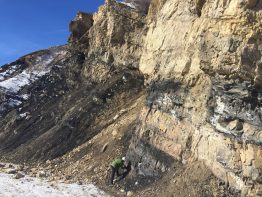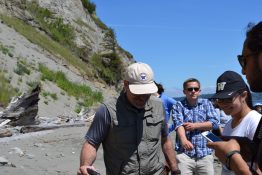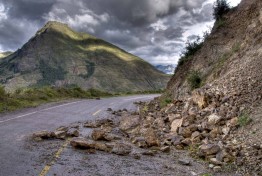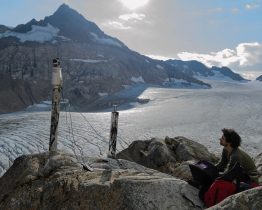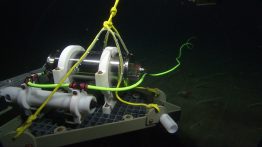The amount of biomass — life — in Earth’s ancient oceans may have been limited due to low recycling of the key nutrient phosphorus, according to new research by the University of Washington and the University of St. Andrews in Scotland. The research, published online Nov. 22 in the journal Science Advances, also comments on the role of volcanism in supporting Earth’s early biosphere — and may even apply to the search for life on other worlds.
Read more at UW Today »Exploring Washington’s geologic diversity at UW Environment
Studying the Pacific Northwest's geology is an immersive experience for students taking UW's Introduction to Geology class.
Read more »50 simulations show how a 9.0 Cascadia earthquake could play out
We know the "really big one" is coming. But what exactly is going to happen in cities along the coast?
Read more at UW Today »Mountain glaciers shrinking across the West
Until recently, glaciers in the United States have been measured in two ways: placing stakes in the snow, as federal scientists have done each year since 1957 at South Cascade Glacier in Washington state; or tracking glacier area using photographs from airplanes and satellites. We now have a third, much more powerful tool. While he was a doctoral student in University of Washington’s Department of Earth and Space Sciences, David Shean devised new ways to use high-resolution satellite images to track elevation changes for massive ice sheets in Antarctica and Greenland.
Read more at UW Today »Hacking a pressure sensor to track gradual motion along marine faults
Deep below the ocean’s surface, shielded from satellite signals, the gradual movement of the seafloor — including along faults that can unleash deadly earthquakes and tsunamis — goes largely undetected. As a result, we know distressingly little about motion along the fault that lies just off the Pacific Northwest coast. University of Washington oceanographers are working with a local company to develop a simple new technique that could track seafloor movement in earthquake-prone coastal areas.
Read more at UW Today »
